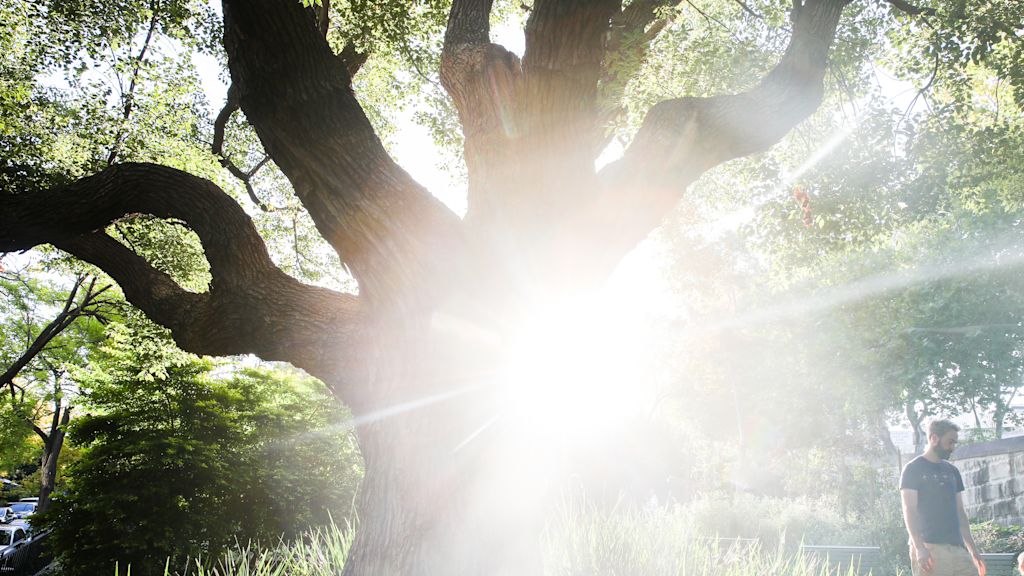The City of Sydney has developed an ambitious plan to expand canopy cover and make cool, calm and resilient communities more accessible to everyone across our area as it continues to combat a changing climate.
A suite of highly detailed strategies and plans has been unanimously endorsed by Council for community comment and aims to guide decision making and increase the quality and quantity of urban tree canopy cover.
“We know how important urban forests are to the liveability of our city. Trees cool our homes, streets and parks, build resilience and improve mental and physical wellbeing,” Lord Mayor Clover Moore said.
“We’ve planted more than 16,000 street trees since 2004 because we see trees and other urban greenery as essential infrastructure – as important as roads and broadband internet.
“The City is one of only a few councils in Australia that has actively worked to increase canopy cover, and the only city to consistently increase canopy over the last decade. Our new Urban Forest Strategy and Street Tree Master Plan will allow us to build on this progress and provides the next important chapter in the City’s green story.
“We're in the middle of a climate crisis and we're already experiencing its impacts. More shade in more corners of the city will help us to combat the urban heat island effect and better place Sydney to mitigate some of the worst impacts of extreme heatwaves. Effective and extensive canopy cover can reduce temperatures on the ground by up to 10 degrees.”
By 2050, experts have forecast Sydney to have a climate more like Grafton in northern NSW which has guided the City of Sydney’s selection of tree species that will have the best chances of survival in what will be a hotter and more humid environment.
“We have gone block by block, street by street across the whole city to map out which tree species are most appropriate. Native species are our preference, but we also have to plant deciduous trees that provide shade in summer and let light through to homes in winter.
“By 2050 Sydney will be hotter and more humid, which means many species we have relied on in the past won't survive, such as the London Plane Tree. We have chosen species that will survive and provide comparable leafage.
“We will now be asking the community if we’ve got it right. With world-leading technology, built by our arborists and geo-spatial experts, you can plug in your address, see which species are recommended for planting on your street, and then leave feedback to let us know if you agree or want change.”
The City of Sydney has set an ambitious goal to increase its overall green cover to 40 per cent, including a minimum of 27 per cent tree canopy by 2050.
Today, local streets and parks have nearly 50,000 trees that clean air and help sequester around 440 tonnes of carbon every year. There are an estimated 40,000 additional trees on private land.
A key aspect of the City of Sydney’s two-year long development of the proposals and plans has been recruiting experts in arboriculture, climate change, landscape architecture and Indigenous ecology to support its expert urban forest management team.
Collaborating with an Indigenous ecologist has brought key knowledge that will help foster better connection to Country in culturally significant areas of the city.
Planting native, exotic, deciduous and evergreen trees along with robust strategies will guide developers and home owners so they too can grow the most appropriate species.
“We want to make sure we are picking the best tree for the job. Where we need to have winter sunlight into an area, that needs to be a deciduous tree. Where we really want to make sure that we have good habitat and biodiversity, we will pick a locally indigenous tree,” City of Sydney’s urban forest manager, Karen Sweeney said.
“Having a range of tree species will also help mitigate against outbreaks of pests and disease that can wipe out large sections of canopy cover and adversely impact our greening goals.
“On top of this, having a good age range is really important to the sustainability of any urban forest. Just like human populations, if the maturity of our trees skews old or young, it throws out the balance and threatens the resilience of the urban forest. Across the board we will aim for diversity.”
The City of Sydney will only remove trees as a last resort where it can’t continue to maintain an old or dying tree or if the tree poses a potential threat to public safety. Removed trees will be replaced with the most appropriate species for that location and be planted at an optimal time for it to thrive.
For a VNR and overlay go to:
https://www.dropbox.com/s/h1uiazaun6m9sex/CCS%2013116%20Tree%20Strategy%20VNR.mp4?dl=0
The draft Urban Forest Strategy is on public exhibition until 28 February 2023. To download a copy of the strategy and have your say, go to:
https://www.cityofsydney.nsw.gov.au/vision-setting/your-say-revised-urban-forest-strategy
The draft Street Tree Master Plan is on public exhibition until 28 February 2023. To have your say and see what’s planned for Sydney visit:
https://www.cityofsydney.nsw.gov.au/strategies-action-plans/street-tree-master-plan
The draft Tree Management and Donation Policy is on public exhibition until 28 February 2023. To download a copy of the policy and have your say, go to:
https://www.cityofsydney.nsw.gov.au/policy-planning-changes/your-say-revised-tree-management-donation-policy
For media enquiries contact Andrew Booth: 0482 530 091 or email abooth@cityofsydney.nsw.gov.au
For interviews with Lord Mayor Clover Moore contact Paul Mackay: 02 8974 4165 or email lordmayormedia@cityofsydney.nsw.gov.au
